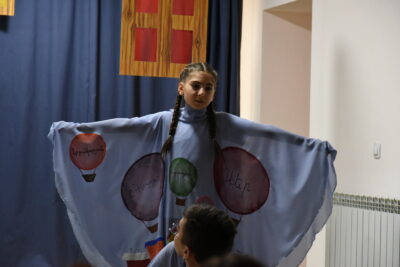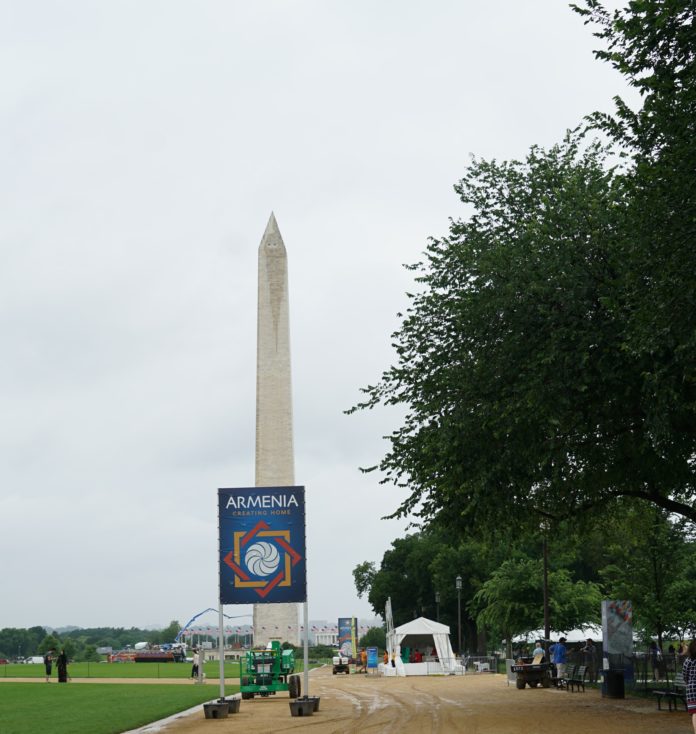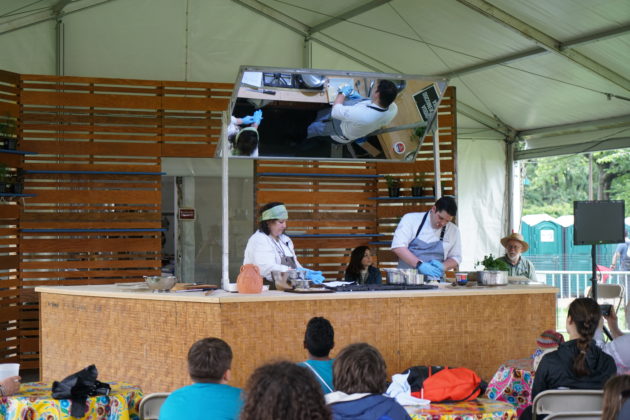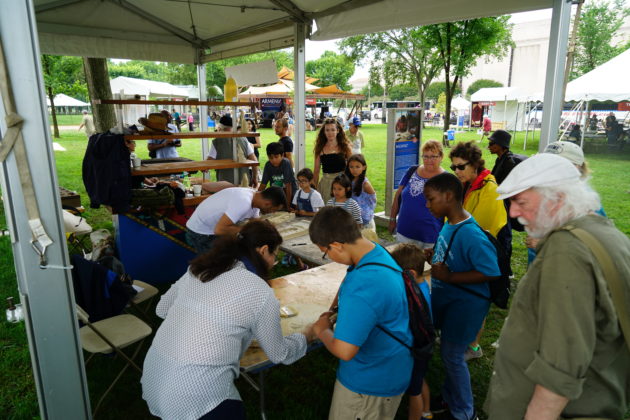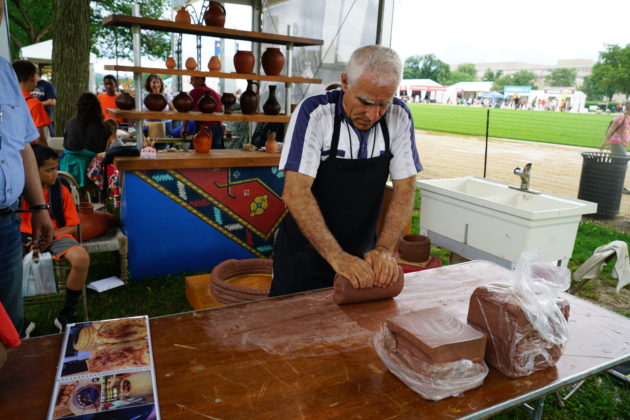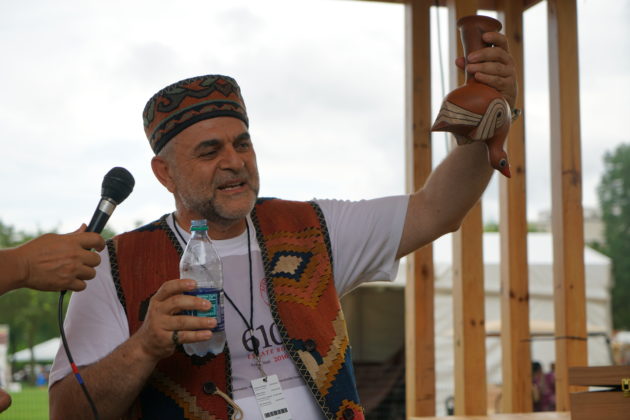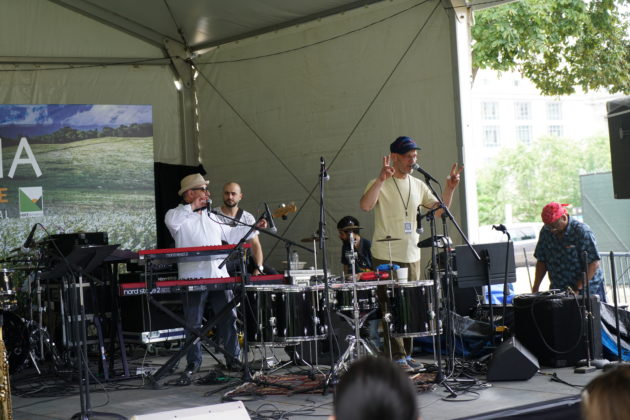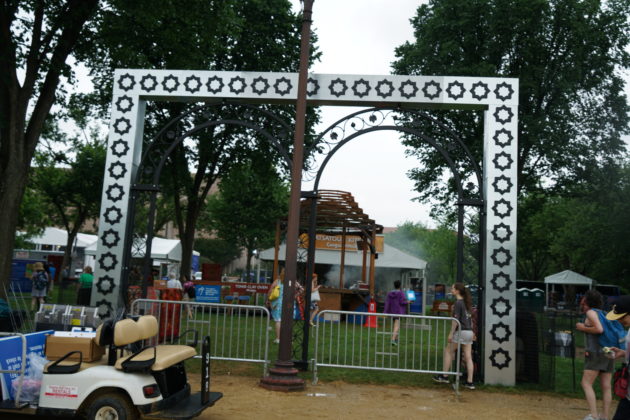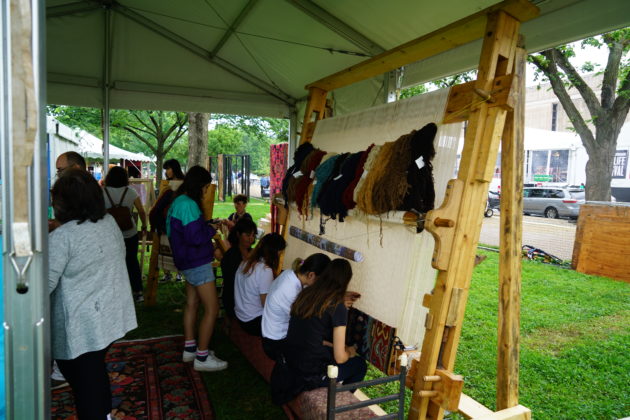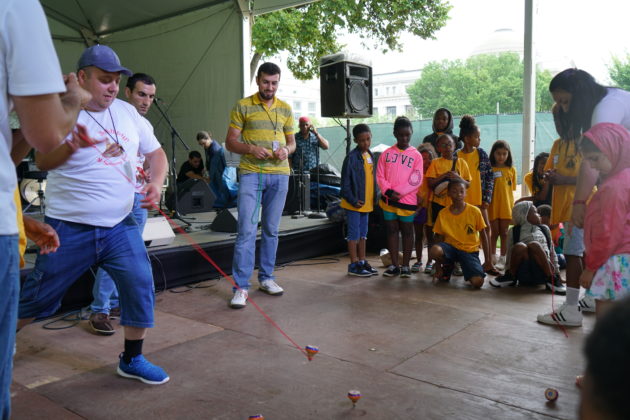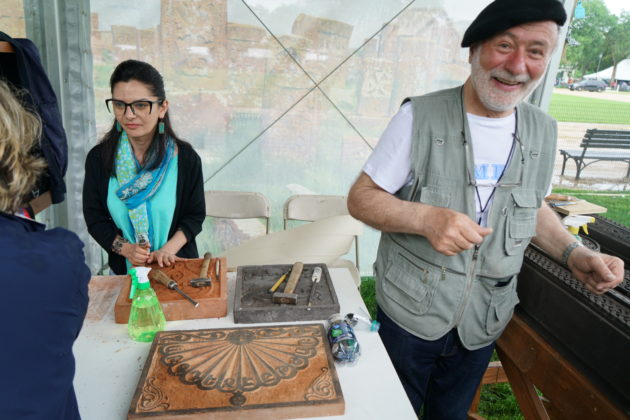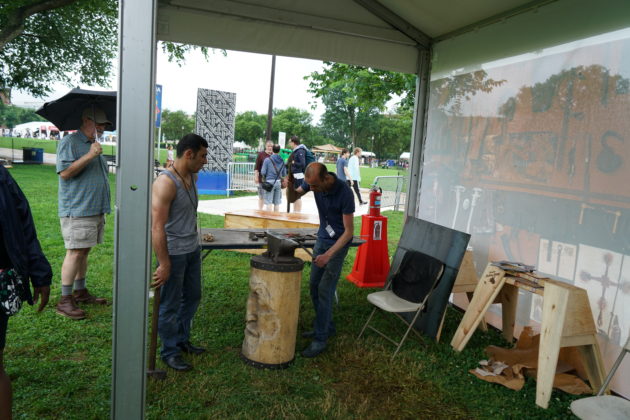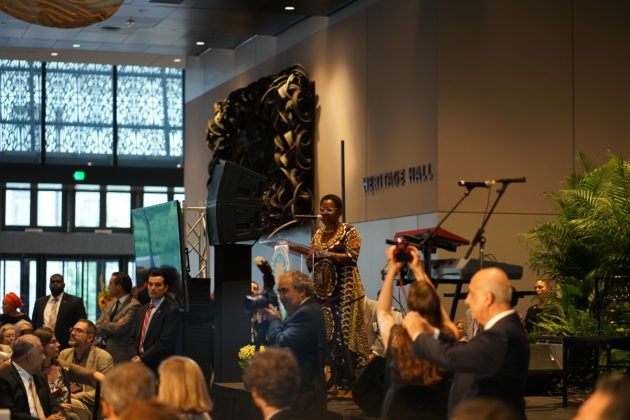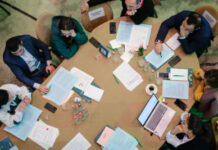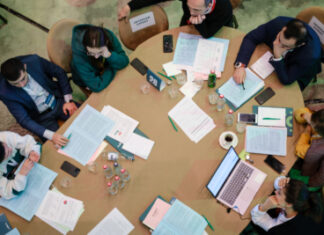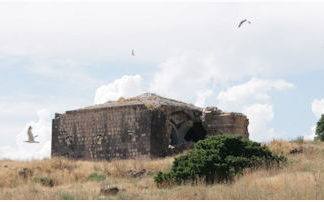WASHINGTON – The first day of the Smithsonian Folklife Festival began on June 27 with a downpour of rain, but this did not dampen the spirits of the artisans, specialists and volunteers on the National Mall, nor of the guests, many of whom had traveled from far corners of the United States to see this year’s two festival components, called Armenia: Creating Home and Catalonia: Tradition and Creativity. Soon enough, the sun came out and the day ended festively among the tents set up on the Mall. In the evening, a reception was held at the National Museum of African American History and Culture to celebrate the start of the festival.
The theme uniting both the Armenian and Catalan exhibits is the linkage between cultural heritage and economic enterprise. The Armenian exhibits include demonstrations of various types of crafts, including ironworking (the old-fashioned way with an anvil), pottery, carpet making, weaving, lace making, and stone and wood carving, and various food-related displays, including cooking demonstrations, lectures on Armenian wine, and volunteers collecting information from visitors on their family food traditions. Live music and dance were ever-present, with folk and jazz the dominant varieties of the former. Even Armenian games, in the form of the frrik or spinning top, were demonstrated, and there was a shadow puppet show. There were panel discussions, and storytelling and film screenings will also be part of forthcoming programs.

Craftsmen came from various parts of Armenia, not just the capital, and as most did not know English, they were paired with interpreters, some of whom were also ethnographers or academic specialists in related fields.
When guests wanted to take a break from wandering among the various exhibits and demonstrations, they could go to food booths which in the Armenian case featured a variety of traditional foods and wines. A store offered various Armenian, Catalan and other folk items for sale.
For many visitors, it seemed as if a corner of Armenia had been transplanted or recreated temporarily in the capital of the United States. It was an unprecedented event on Armenian culture in the United States in terms of scale and outreach.
The Smithsonian Institution, supported by USAID and the US Embassy in Armenia (and through the My Armenia Cultural Heritage Tourism Program), partnered with the government of the Republic of Armenia and the Institute of Archaeology and Ethnography in the National Academy of Sciences of Armenia. Consequently, at the evening reception, President of Armenia Armen Sarkissian spoke, along with Carolyn Mugar of the Armenian Assembly of America, and various Smithsonian officials, including Sabrina Lynn Motley, the director of the Smithsonian Folklife Festival.
